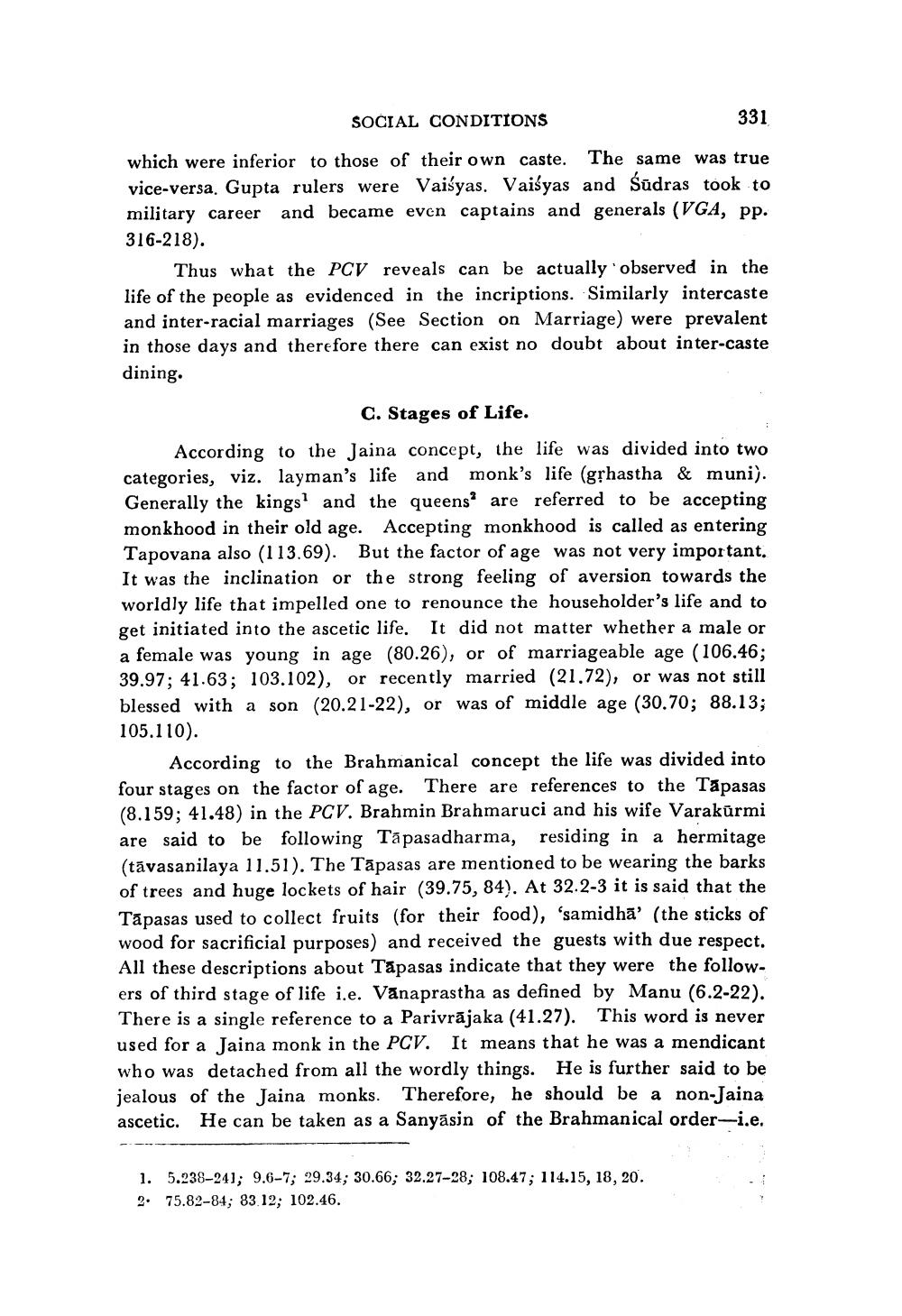________________
SOCIAL CONDITIONS
331 which were inferior to those of their own caste. The same was true vice-versa. Gupta rulers were Vaisyas. Vaisyas and Sūdras took to military career and became even captains and generals (VGA, pp. 316-218).
Thus what the PCV reveals can be actually observed in the life of the people as evidenced in the incriptions. Similarly intercaste and inter-racial marriages (See Section on Marriage) were prevalent in those days and therefore there can exist no doubt about inter-caste dining.
c. Stages of Life. According to the Jaina concept, the life was divided into two categories, viz. layman's life and monk's life (gļhastha & muni). Generally the kings and the queens are referred to be accepting monkhood in their old age. Accepting monkhood is called as entering Tapovana also (113.69). But the factor of age was not very important. It was the inclination or the strong feeling of aversion towards the worldly life that impelled one to renounce the householder's life and to get initiated into the ascetic life. It did not matter whether a male or a female was young in age (80.26), or of marriageable age (106.46; 39.97; 41.63; 103.102), or recently married (21.72), or was not still blessed with a son (20.21-22), or was of middle age (30.70; 88.13; 105.110).
According to the Brahmanical concept the life was divided into four stages on the factor of age. There are references to the Tapasas (8.159; 41.48) in the PCV. Brahmin Brahmaruci and his wife Varakūrmi are said to be following Tāpasadharma, residing in a hermitage (tāvasanilaya 11.51). The Tāpasas are mentioned to be wearing the barks of trees and huge lockets of hair (39.75, 84). At 32.2-3 it is said that the Tāpasas used to collect fruits (for their food), 'samidhā' (the sticks of wood for sacrificial purposes) and received the guests with due respect, All these descriptions about Tāpasas indicate that they were the followers of third stage of life i.e. Vanaprastha as defined by Manu (6.2-22). There is a single reference to a Parivrājaka (41.27). This word is never used for a Jaina monk in the PCV. It means that he was a mendicant who was detached from all the wordly things. He is further said to be jealous of the Jaina monks. Therefore, he should be a non-Jaina ascetic. He can be taken as a Sanyasin of the Brahmanical order-i.e.
1. 5.238-241; 9.6-7; 29.34; 30.66; 32.27-28; 108.47; 114.15, 18, 20. 2. 75.82-84; 83.12; 102.46.




